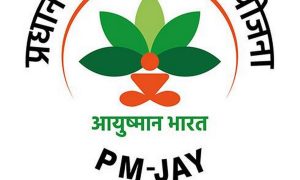Most individuals invest in National Pension System (NPS) only to get a tax deduction of Rs 50,000 under Section 80CCD (1B). However, this is a wrong approach for investors who want long-term capital appreciation by investing in NPS.
NPS is considered one of the best retirement-focused investment schemes for employees across sectors, private and government, providing a range of benefits. Employees not just get tax benefits but their money also compounds if they invest for the long term. Returns from most NPS schemes have been in the range of 9-12% since inception.
Healthy returns from NPS make the scheme a reliable pension source for post-retirement life. Investors can maximize their gains from NPS through wise asset allocation. Recently, the Pension Fund Regulatory and Development Authority (PFRDA), allowed up to 75% allocation of funds in Equity (E) under active choice without any conditions of tapering from the age of 51 years.:
Read More: DoT approves BSNL’s Rs 26,000-crore 4G tender award to TCS
How to Choose the Right Asset Allocation for NPS Tier 1 Account
“NPS is a clear fund contribution scheme. Here you make regular contributions to the fund. The returns on investment generated during the NPS withdrawal depend on the portfolio asset allocation,” said Sreekanth Nadella, MD and CEO of KFintech.
Nadella explained how to choose the right asset allocation for NPS Tier-1 account
NPS investors have the following choices:
Active Choice
In Active Choice, the subscribers choose their asset allocation with certain limits – A maximum of 75% in equity till 50 years. The upper limit tapers by 2.5% each year till 60 years (up to 50% of the funds).
Auto Choice
In Auto Choice, subscribers don’t make any asset allocation decisions. There are three investment Life Cycle Funds choices:
- Aggressive Life Cycle Fund (LC75) – These funds have an upper limit of 75% equity for up to 35 years. Afterwards, it reduces down to 15% by 55 years.
- Moderate Life Cycle Fund (LC50) – These funds have an upper cap of 50% equity up to the age of 35 years. Afterwards, it reduces down to 10% by 55 years.
- Conservative Life Cycle Fund (LC25) – These funds have an upper limit on Equity of 25% up to 35 years. Afterwards, it tapers down to 5%.
Read More: TCS to create 1,200 new jobs in US amid layoff season
Choosing the Right Allocation
“NPS should be a portion of your retirement savings portfolio. It should not be the only standalone investment. It will be wiser to invest for your retirement in EPF, PPF and equity funds also,” said Nadella while sharing the following tips to make the right asset allocation.
- For younger people up to 40 years, be aggressive with your retirement savings. Allot copiously to equities. Include NPS in the investment mix.
- The mid-40s or higher age group should allot a bigger portion of the funds to debt savings (EPF plus PPF). In NPS, invest largely in equities.
- If your PF corpus isn’t chunky and you have invested heavily in equity funds, then be conservative with NPS for the safety of funds.
“These are some normal approaches to having the right mix of investments. You have unique requirements as an individual investor. It makes sense if you take your own decision. If you feel nervous about making a decision alone, take investment advice from a good investment advisor,” said Nadella.





































